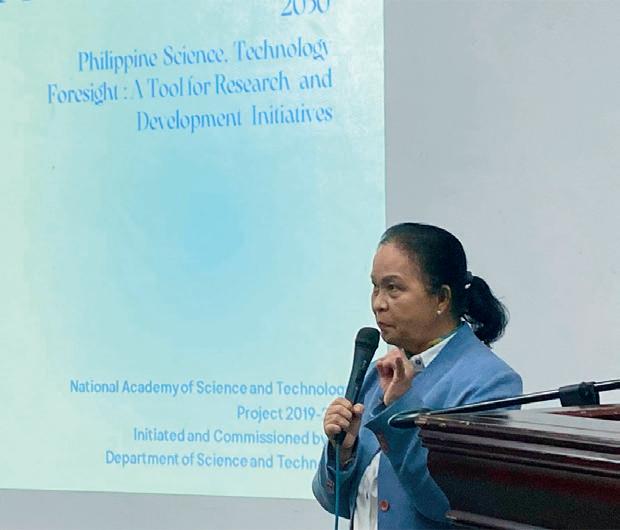
5 minute read
Crafting the CEU Research Agenda for SY 2023-2028
by Josephine S. De Leon
The research agenda of the University serves as the direction for the research undertakings supported by the University. The Office of Research Innovation, and Institutional Development (ORIID), headed by Dr. Erna Yabut - Vice President for Research and Evaluation, led the crafting of the CEU Research Agenda. The event took place on June 27, 2023, at CEU Mendiola in Manila’s ISC Mezzanine. Deans, Heads, Research Coordinators, and Faculty engaged in research all attended. An environmental scan was conducted to lay the framework for the creation of the CEU Research Agenda for 2018–2023.
Advertisement
S&T Fellow Dr. Karell Jo Angelique C. Calpito discussed the PCHRD-DOST Research Agenda (NHURA) and AmBisyon 2040. Pagtanaw 2050 was presented by Academician Rhodora Azanza, President of the National Academy of Science and Technology, Philippines (NAST PHL).
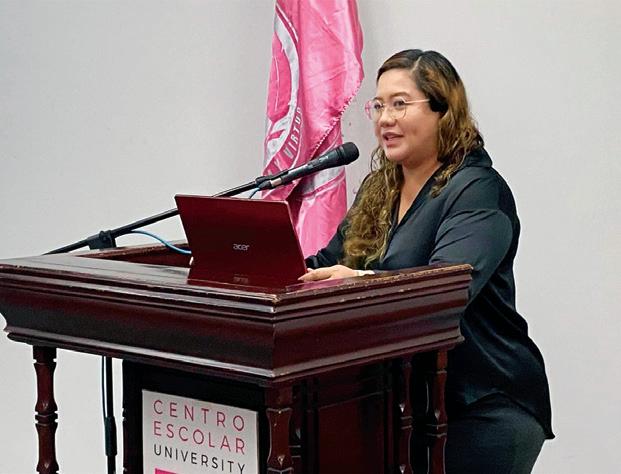
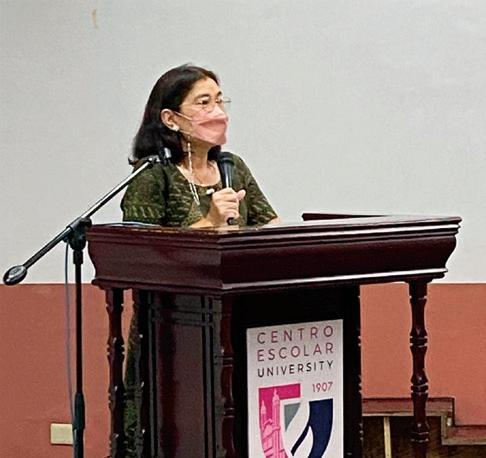
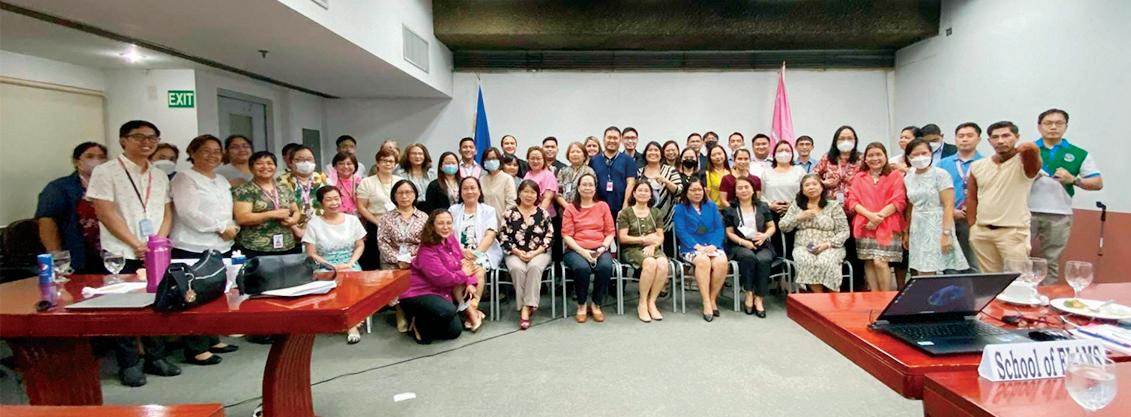
The CHED Research Agenda was then delivered via recorded video by Ms. Mayumi G. Belandres, Officer-in-Charge, Chief Education Program Specialist, Office of Planning, Research, and Knowledge Management-CHED Central Office. After the Environmental Scanning, the Evaluation of the CEU’s Research Agenda was presented by the Acting Head of the Research and Innovation Department, Dr. Josephine M. De Leon.
Participants in a workshop activity made up the afternoon session. Each discipline’s priority research areas were chosen, presented, and aligned with the global and national research agendas. The CEU Research Agenda for the years 2023–2028 lays out the university’s orientation for five (5) years in terms of research and innovation. The United Nations Seventeen (17) Sustainable Goals, the National Academy of Science and Technology’s Pagtanaw 2050, the Department of Science and Technology’s National Harmonized Research and Development Agenda, the National Economic Development Authority’s AmBisyon 2040, and the CHED’s National Higher Education Research Agenda, serve as the foundations of the CEU Research Agenda.
Pharmacy Escolarian
shines...
from page 17 including Ms. Salazar, was the one given by Professor Paul Barter from Lee Kuan Yew School of Public Policy - NUS, as he tackled Singapore’s Urban Transport story which revolved around the policies, plans, and efforts of the government in terms of achieving major improvements in the country’s transport system. Along with Professor Barter were two more speakers, namely, Professor Maurizo Peleggi from the Department of History - Faculty of Arts & Social Sciences and Professor Erica Larson who is a Research Fellow in the Asia Research Institute. Student participants were provided with a great opportunity to learn from some of the most exceptional individuals at NUS. In my interview with Ms. Salazar, she expressed how fruitful, informative and relevant these topics are in today’s time.
Aside from the learning sessions, they visited different notable tourist spots as they learned and witnessed an on-ground perspective of the progressive efforts of the people of Singapore, particularly in its furtherance and development as a country. They visited the Marina Barrage, the Urban Redevelopment Authority, and others.
During the fourth day of the event, a team building activity was conducted wherein the participants made a video on social issues that are experienced and relevant in the whole world. Ms. Salazar’s team focused on sharing different college experiences that have affected the students’ mental health. Furthermore, they also tackled in the video how some students overcame and coped with the stress and issues that come with these experiences. Problems surrounding mental health are indeed a recurring issue, especially with students who are currently challenged by the ever-changing times, as well as the recent effects of the COVID-19 pandemic. These matters may be brought out by numerous things; however, the uniqueness of our experiences does not mean we live in solitude because many can relate and understand. The presentation of Ms. Salazar’s team captured the essence of connection among people. Despite going through our own things, we are indeed secretly connected through a common goal of finding a solution. Striking with relevance and impact, their team presentation won the Best Content Award 2023. In addition, she also received an Outstanding Youth Leader Award 2023, which is an award given for her service and leadership during the entirety of the learning and travel sessions of the event.
Jermaine Ghel T. Salazar is truly a beacon of inspiration for fellow youth leaders as her achievements prove her heart for service and leadership. As the 10th AYLTLC came to an end, there’s no doubt that the event has, yet again, brought together bright leaders across cultures and has successfully equipped young minds with the knowledge and skills to become skilled and capable leaders. From Ms. Salazar’s perspective, and from one follower to another, Singapore teaches us the power and the importance of listening to people. Being a proficient leader is not about ruling over your peers or subordinates— it’s about guiding and listening to what they have to say. As Ms. Salazar imparted, “What matters is serving the people, not the recognition that comes along with it..”
Anne Yambao, violin, and Kenneth Laron, cello; Nocturnal Birds (Yumang), performed by Lester Armenta, flute; Theme and Variations for Solo Saxophone in C Lydian Mode (Concepcion), performed by Kim Correa, alto saxophone; Falling Leaves (Yumang), performed by Raphael Espada, violin; A Cold Summer (Concepcion), performed by Prof. Mario Echipare, Jr., guitar; Mousehunt (Yumang), performed by Prof. Benjamin T. Reyes, piano; Heart to Hurt: A Mini Piano Suite (Concepcion), performed by Jascha Obieta, piano; Piano Sonata No. 1 (Concepcion), performed by Jascha Obieta, piano; Crossing the Bar (Yumang), performed by Prof. Benjamin T. Reyes Jr., piano, and Christel Alvarado, soprano; O Aking Tala (Concepcion), performed by Lean Victor Lucas, tenor, and Juliuz Mani, piano; “Hope” is the thing with feathers (Yumang), performed by Liedertafel; Suite for the Youth (Concepcion), performed by the Manila Symphony Orchestra Strings, with the composer conducting; DRACULA (Yumang), performed by the Manila Symphony Orchestra, with the composer conducting; and Ambushed by the Voices (Concepcion), performed by the Manila Symphony Orchestra, with the composer conducting.
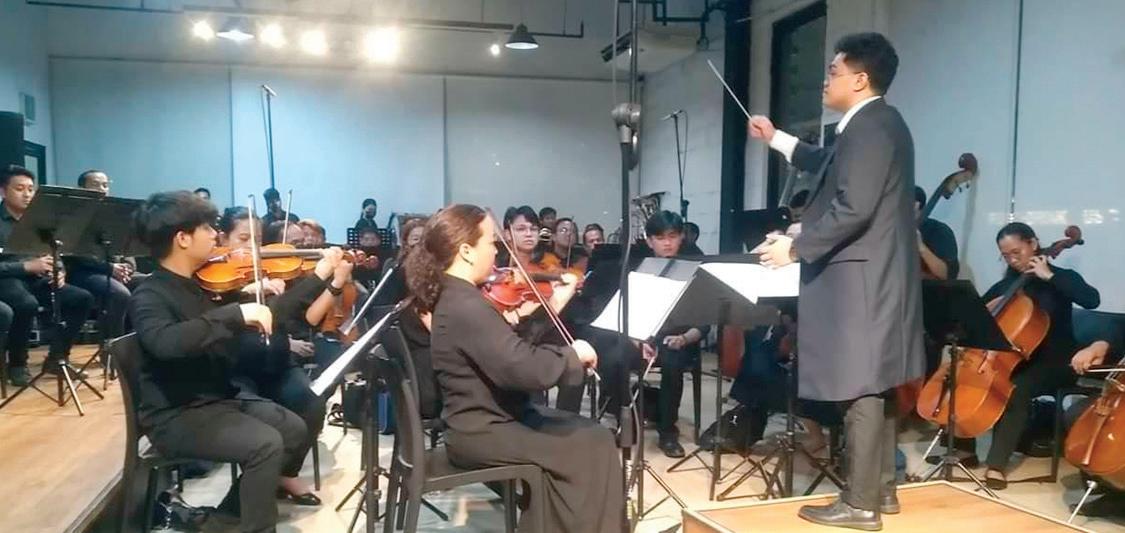
The entire recital experience, especially having occurred at the end of their schooling, was a highlight in itself in the composers’ lives as music students. However, some high points of both programs are worth noting. The composition graduates all agree that the orchestra performances were the most looked forward to, as they were the largest ensemble performing among all their compositions. Additionally, each composer was required to conduct their own orchestra piece, which was definitely a feat of endurance and hard work having to lead and direct such a large number of performers. Other moments of the recital day remain memorable to both the composers and the audience, such as Concepcion’s Piano Sonata No. 1, where the pianist really stretched the limits of musical performance and turned the piece into performance art with expressive exclamations and almost shocking playing techniques. Canlas’ Infernus is another unforgettable piece for most, pairing cries of despair and anguish from the choir with an almost apocalyptic percussion orchestration. Yumang considers that, for him, having his pieces performed by various musicians was the peak of his recital experience, as it really drove home for him that he had achieved the title of being a composer through and through.
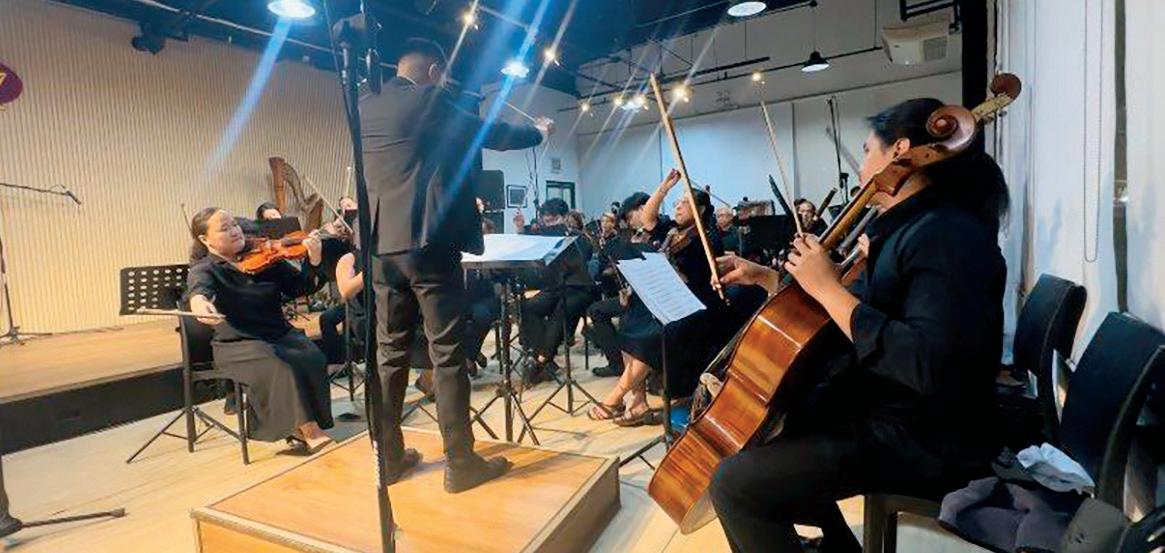
The composers would like to sincerely thank their families, friends, faculty members, and schoolmates for making their graduation recital a reality. It was truly thanks to the effort of the collective community that any of this was made possible. Even as the composers take the next steps in their journeys as musicians, they fondly hope that they leave behind a flourishing composition department that produces even more graduates in the years that follow.










